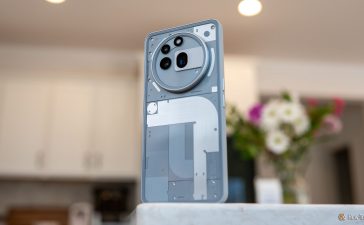Zoox, the autonomous vehicle company owned by Amazon, said that its toaster-shaped driverless vehicle without a steering wheel or pedals was approved to drive on public roads with passengers in California. The company celebrated the milestone as the “first time in history a purpose-built robotaxi — without any manual controls — drove autonomously with passengers.”
Zoox is one of dozens of companies currently testing AVs on public roads in the Golden State. And while it trails behind competitors like Waymo and Cruise in the race to commercialize the technology, it is making advancements by introducing a new kind of vehicle to the road — one that lacks traditional controls and could hardly be described as a “car” in the modern sense of the word.
Last week, California’s Department of Motor Vehicles approved a modification to Zoox’s existing testing permit allowing it to test its robotaxi in a “limited area” in Foster City, California, where the company is headquartered.
Zoox is one of dozens of companies currently testing AVs on public roads in the Golden State
But Zoox’s purpose-built robotaxi can hardly travel where ever it wants. According to the DMV, the vehicle is limited to a top speed of 40 mph, can only operate on Saturdays and Sundays during daylight hours, and is prohibited from driving during bad weather.
According to Levinson, the Zoox vehicle drove a two-mile loop “dozens of times” on open roads with passengers in the vehicle. “Our vehicle never got stuck, paused, or had any issues whatsoever while driving,” he wrote. “As you’d expect on open public roads, we encountered lots of vehicles, pedestrians, bikes, etc. The route has multiple traffic lights, left/right turns, unprotected cross traffic, and speeds up to 35 MPH.”
Levinson also addressed questions about Zoox’s claim to be the first to deploy a purpose-built autonomous vehicle on public roads, considering Google had ferried passengers in its purpose-built Firefly vehicle on open roads more than five years ago.
“Our vehicle never got stuck, paused, or had any issues whatsoever while driving.”
Google’s prototype wasn’t built to comply with federal safety standards, nor could it exceed 25 mph, Levinson said. Firefly “was also never designed for production, as it was clearly a test/research vehicle platform (which Waymo then abandoned),” he added. “In contrast, the Zoox robotaxi complies with the complete set of FMVSS, is fully street-legal, and has a comprehensive set of safety and comfort features for our riders.”
Zoox’s vehicle, which was first unveiled in 2020, is currently testing AVs in Seattle, Las Vegas, and the Bay Area. The company mostly uses Toyota Highlanders retrofitted with sensors and cameras as part of its fleet.
Zoox is one of the few companies that is building its own autonomous vehicle. Cruise, a wholly owned subsidiary of General Motors, is expected to begin mass production of its Origin vehicle later this year. Both companies will need permission from the federal government to build vast quantities of vehicles that don’t comply with current safety standards, which require traditional controls like pedals and steering wheels.










